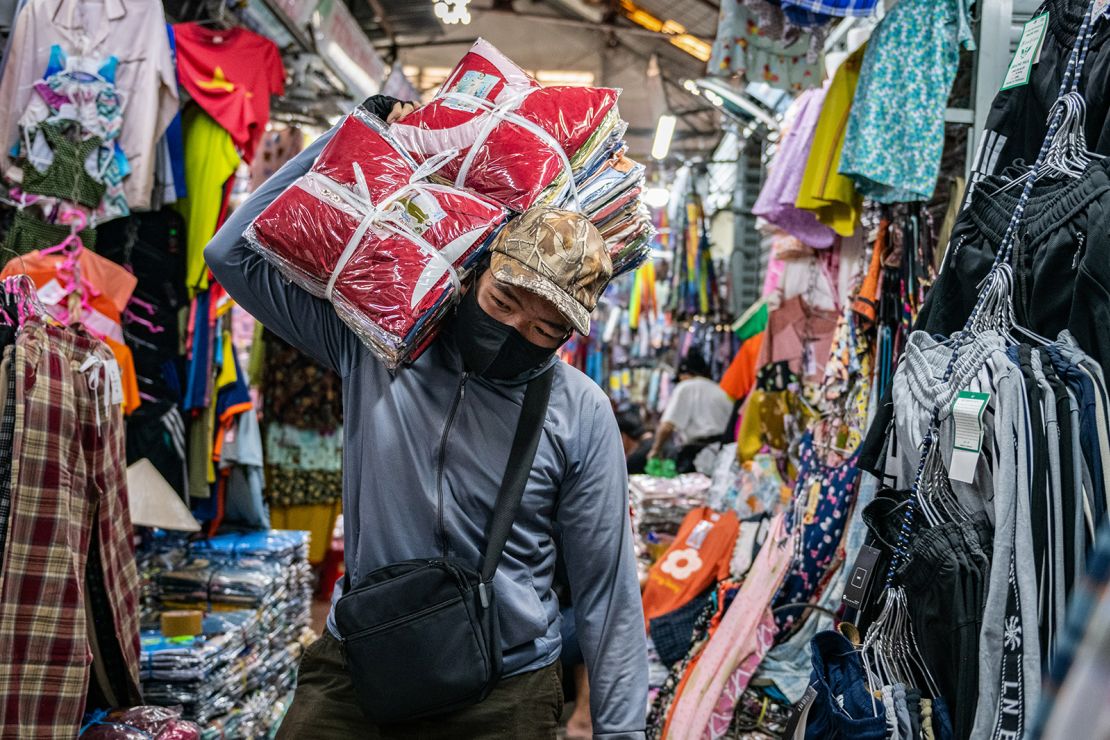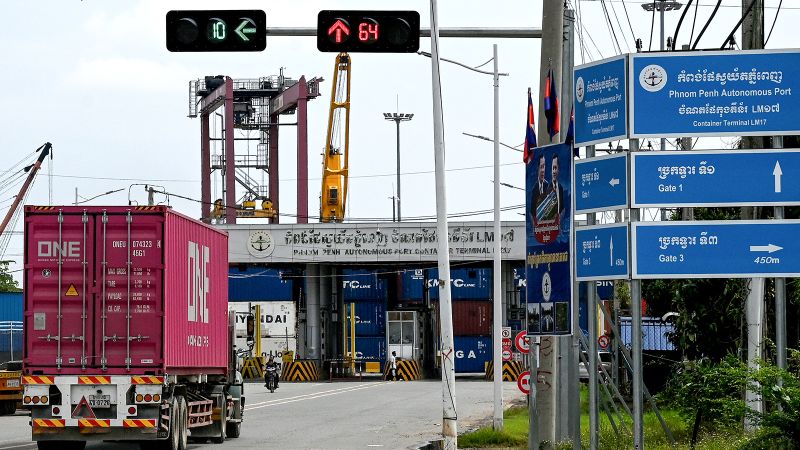CNN
—
For Tim Hsu, who sells modern lamps and ceiling lights mostly to American customers, US President Donald Trump’s historic tariff announcement has upended his carefully made plans.
Last year, the Taiwanese businessman decided to invest in Cambodia to diversify his production base beyond his traditional stronghold of south China. He was preemptively hedging against the risk of possible higher tariffs on China during Trump’s second term.
But Wednesday’s announcement of an unexpectedly harsh levy on all US imports from Cambodia, the highest rate in Asia and second-highest globally, has changed everything.
“If the 49% tariff remains unchanged, we will withdraw our investment from Cambodia,” Hsu told CNN.
For now, his next move remains uncertain as questions linger over whether the steep tariff will stay.
Pulling out of Cambodia is relatively easy for him because the investment is still in an early stage. But for many other companies with long established factories employing thousands of workers in the country, one of Asia’s poorest, the tariff news is nothing short of devastating. And it’s not alone.

Many countries in Southeast Asia and South Asia — including Laos, Vietnam, Myanmar and Sri Lanka — were hit by tariffs over 40%, which could cripple their export-reliant and extremely vulnerable economies.
For more than 15 years, they had been benefiting from global investors looking for alternatives to China’s efficient supply chains, which were gradually getting more expensive.
US-China tensions and the Covid-19 pandemic in recent years have accelerated the trend. Labor-intensive industries – from garments to footwear and lower-end electronics manufacturing and assembly – have subsequently become a major driver of these countries’ economic growth.
Some had already struggled with the fallout from Trump’s funding freeze of USAID, which provides humanitarian assistance to a region particularly susceptible to natural disasters.
Ahmed Albayrak, a research associate at the Sydney-based Lowy Institute’s Indo-Pacific Development Centre, said Trump’s tariffs will hit Cambodia, a garment production powerhouse, the hardest among all Southeast Asian countries given its major export of apparel and footwear products to the US.
More than 37% of its exports are bound for the US, according to a CNN calculation of data released by Cambodia’s ministry of economy and finance, making it especially vulnerable to US tariffs.
Exports of apparel and footwear accounted for over 43% of the country’s exports last year, according to another CNN calculation.
As a result, the vast number of garment workers, many of whom get by with a $200 minimum monthly wage, will be the hardest hit. Last year, the country of 17 million people had about one million people working in the garment, textiles and footwear industry, according to the United Nations Development Programme. About 75% of those workers are women.
Major international brands like Nike and Adidas have been moving their production lines to Southeast Asia to reduce exposure to China, which has been locked in a geopolitical tussle with the US.
“The negative impact of this tariff on the broader economy will be huge,” Albayrak said, warning of shrinking production and job losses.
Other Southeast Asian countries hard hit by tariffs include Laos at 48%, Vietnam at 46%, and Myanmar at 44%. Laos and Myanmar are also among the poorest countries in Asia.

Vietnam, another clothing manufacturing hub, sent about a third of its overall exports to the US, according to Albayrak.
“Exports to the US have been a major part of Vietnam’s recent growth story. If they are hindered with tariffs, the growth prospects of the country will take a hit,” he said.
Indonesia is less affected. Despite facing a 32% tariff, only 10% of the country’s exports are bound for the US.
Another impoverished country hit by sky-high tariffs is Myanmar, which was hit by a massive earthquake last week that has killed more than 3,000 people. The disaster came as the country remains mired in a four-year civil war, triggered by a military coup, with junta forces locked in fierce battles against opposition forces nationwide.
In South Asia, Trump has imposed the steepest tariffs on Sri Lanka, hitting the island nation with a 44% levy as it struggles to recover from an economic crisis that helped topple its government. The country now relies on an International Monetary Fund (IMF) bailout.
Bangladesh, also home to a major garment industry, faces 37% tariffs on its exports to the US, a move expected to strain its economy. The US has historically been a top market for Bangladeshi garments, and the new tariffs could erode the industry’s competitiveness, threatening jobs in the sector.
“Both Bangladesh and Sri Lanka would be severely impacted, as access to the US, their largest export market, would be restricted,” according to Biswajit Dhar, a distinguished professor at the Council for Social Development in New Delhi.


